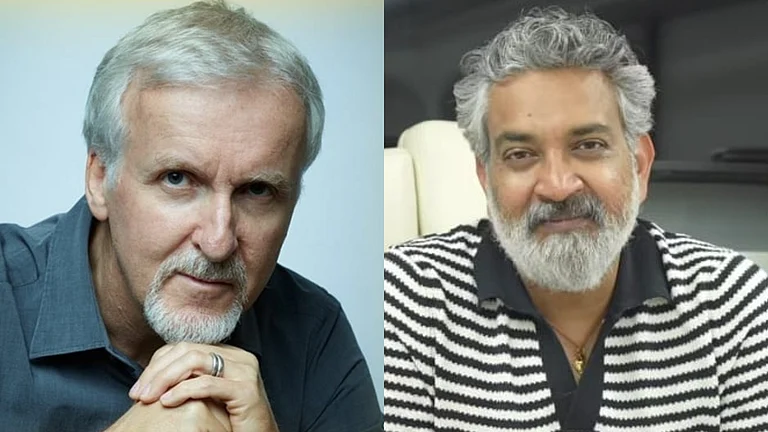The playground at Dewa Sharif, a small town famous for the mausoleum of Sufi Saint Haji Waris Ali Shah, where an annual fair is organised, was the first place that marked the arrival of Kunwar Digvijay Singh ‘Babu’ — a legend whose talent left many veterans awestruck even when he played as a teenager. No one had visualised that this hockey wizard will enthral with his dribbling, half of the opponent team members will be covering him, and he will give two Olympic gold medals in a journey initiated in the mofussil city of Barabanki in Uttar Pradesh.
In 1935, a young teenager of hardly 13-14 years was dribbling with such accuracy that the opposite team which even included senior players had a tough time. Babu, born on 2 February 1922 in Barabanki, earned people’s applause and even praise from opponents.
Scores of Olympians, Babu’s family members, former Hockey players, storytellers, and hockey lovers converged in Barabanki, a city hardly 27 kilometres from state capital Lucknow on 2 February 2022 to witness a special storytelling session on KD Singh ‘Babu’ to mark his birth centenary. Himanshu Bajpai, the kilometers (Daastango), perhaps in a first has chosen a sports personality —none other than Babu— for his storytelling session.
Himanshu stated, “This is the first time that storytelling is being held on a sports personality. Babu remains the first choice. He brought laurels for the country and gave thousands a new hope to smile by winning a gold medal in the Olympics just after Independence. So humble that none returned without his help.”
As one moves from Barabanki’s bus station towards Dewa Sharif, the first crossroad now sports Babu’s statue in his signature dribbling position. Dewa Fair is still organised annually and hockey matches are still played. The only difference is that the crowd has dwindled and people have lost interest in hockey. Perhaps many may not be aware of the contribution of Babu.
A few years later after the Dewa Mela match, Babu played in the Trader's Cup in Delhi, a much bigger tournament drawing the attention of everyone. Babu dodged with such accuracy that several senior players were surprised at his talent. Meticulous, conscientious, and punctilious, adjectives fall short of describing Babu’s talent.
Post-Partition, the 1948 Olympics was the first event where India was participating as an independent nation. Babu was now Vice Captain of the Indian hockey team. He played on the ‘Inside Right’ position. India won the tournament and bagged Olympic gold. The feat was repeated in the 1952 Helsinki Olympics, this time Babu was the captain of the team and half of the opponent team was covering him only.
Babu’s stardom had reached its zenith but his humility, however, remained the same. Even during the victory procession at Barabanki, he recognised the rickshaw puller who used to ferry him to the stadium. Awards poured in and he was awarded the Helms Trophy in 1953 for being the best hockey player in the world and the best sportsman in Asia. The feat remains unparalleled. Later in 1958, he was awarded the Padam Shri.
Himanshu Bajpai opines that Babu is often compared with the Hockey wizard Dhyanchand, though both of them belong to a different genre.
“I had a detailed discussion with Dhayanshand’s son Ashok Dhyanchand, who was also a hockey player and coached by Babu. He was all praise for Babu and said there will be no Babu,” Bajpai said.
Recently, during the Hockey World Cup at Bhubaneswar, Bajpai presented his storytelling session on Babu. And after the show, a person identifying himself as Ramendra Singh approached Bajpai.
“My father played with Babu. He was so large-hearted that he used to make all advances and when reached D within scoring limits, pass on the ball to my father for scoring,” he said to Bajpai.
Indeed, Babu’s stature was so towering that in Barabanki and Lucknow, he became a heroic figure in folklore.
Nonetheless, Babu never disappointed anyone. During his second stint as coach, Babu coached the Indian national hockey team and even coached Hong Kong team. Simultaneously, he coached Lucknow University students and Colvin Taluqedar’s College students.
“Just imagine, can any sports star of the present generation coach students of university or college while having a national assignment? Pick any big name, will they coach college students? No, but Babu was different, he breathed hockey,” Bajpai said.
Babu was a member of the sports council in UP, later the first director of the Sports Directorate, and was instrumental in launching many national players besides pushing the case of players for government jobs.
Babu was a player for whom former New Zealand Captain C V Walter has said: “Babu’s dribbling is poetry in motion.” The British press wrote him as elusive as Dhyanchand. Words are inaccurate to describe his wizardry. it had to be seen to be enjoyed.
The year 2022 was his birth centenary. Babu still lives in the hearts of hockey lovers. In Lucknow, a metro station is named after him. KD Singh Babu stadium was constructed in Lucknow and Barabanki. Still, a lot remains, the magic, wizardry, art, and skill of Babu have to be carried forward.

























